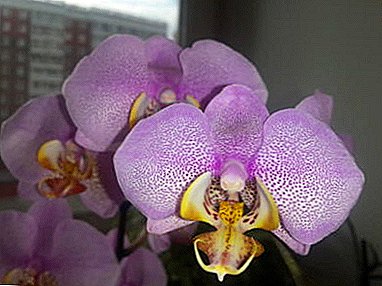
Mining moth is a pest belonging to the Pestryanok family and the order of the Lepidoptera.
This name these pests received because their small caterpillars damage leaves, gnawing them from the inside, laying long, winding passages, "mines".
There are many species of the mining moth, but most common in our latitudes apple and chestnut.
Description of Mining Apple Moth
 Both the apple and chestnut moths have almost the same structure and appearance.
Both the apple and chestnut moths have almost the same structure and appearance.
The adult is a small butterfly, with a wingspan of up to 1 cm.
The apple moth is distinguished by its yellow front wings with white triangles and black edging. Hind wings narrow with gray stripes.
The chestnut moth has reddish front wings with white stripes and a black border, and gray thin rear wings.
Pest larvae are white, small. Caterpillars - slightly larger, with well-defined legs. In its development, there are several cycles. Adult caterpillars reach a size of 5-6 mm.
Stages of development
One mole of mines lays about 300 eggs. Such masonry can be seen on the lower or upper side of the sheet. After 10-15 days from the eggs appear the larvae, which immediately begin to gnaw the internal passages in the leaves. Outside, such moves look like swollen beige or brown patterns.Larvae develop in several stages.: during the first three phases of development, they feed only on leaf sap.
At the fourth stage, a larva is formed from the larvae, which feeds on the fiber and leaf tissues, and the passages formed by it become wider and well visible. In the last, sixth phase, the caterpillar stops feeding and begins the process of pupation.
The resulting pupa is dark-brown, 5-6 mm long, covered with a short light nap. Inference process from an adult pupa takes about 2 weeks. Therefore, in one season, at least three generations of moths may appear.
In the form of a pupa, the miner moth tolerates frost well, but most of the caterpillars do not have time to pupate by the onset of winter, winters in bark cracksand often dies.
Pupae overwinter under trees in fallen leaves. In the spring, when t increases to + 8-10C, butterflies fly out of the pupae and start laying eggs.
Related species
In addition to apple and chestnut mining moles exist many other varieties this pest:
- tomato miner moth;
- lime mole;
- juniper;
- plane tree;
- tuevaya;
- acacia;
- poplar and others
All these species belong to the same Pestryanok family and leave identical traces of “mines” inside the leaves.
A photo
You can visually get acquainted with different types of the mining moth in the photo below:





Geographical distribution
Chestnut mole was first discovered in the 80s. of the last century in Macedonia and very quickly spread throughout Europe. Apple moth appeared in our latitudes for a long time. Its homeland is considered to be North America.
What is dangerous pest?
 The mining moth is dangerous because damaged leaves weaken the plant.
The mining moth is dangerous because damaged leaves weaken the plant.
Chestnut moth eats chestnut leaves, and apple moth can cause harm not only to apple trees, but also to cherries.
For the season one generation of such pests able to destroy up to 90% of all tree foliage.
In addition to weakening the plant, the molar mole is carrier of many dangerous infectious diseases. If you do not take timely measures to combat - the tree may die.
Control and prevention measures
It is not easy to fight a miner moth, but you can. For this use insecticides and natural methods.
Moth eggs can be destroyed by multiple processing. paraffin-containing preparations.
Very good help in the fight against eggs and larvae Dimilin (1 kg / ha) at least 2 times per season, at intervals of one month.
Larvae and caterpillars are also well destroyed by means of pyrethroids and carbamates, for example, Decis (2 ml per bucket of water) or Karbofos (90 grams per bucket of water). But such processing can be carried out only as a last resort, with a strong defeat of the tree. Mole gets used to any insecticide very quickly, so the preparations alternate.
Adults die from one treatment, and the larvae and the larvae will need about 6 sprays, with an interval of 4-5 days.
 Can be sprayed Actellic (10 ml per bucket of water). Processing is carried out only in the morning and in the evening, in dry weather.
Can be sprayed Actellic (10 ml per bucket of water). Processing is carried out only in the morning and in the evening, in dry weather.
In the pupal phase, the miner mole of the preparations is insensitive.
Popular methods of struggle include a number of activities:
- All affected leaves are removed and burned.
- Trees are treated with oil from spring crops.
- The garden houses birdhouses and bird feeders - natural enemies of the caterpillars and moth larvae.
- In May and August, insects are washed off from the leaves and tree trunk with a strong stream of water.
- They hang out special lures - plates of yellow color, smeared with glue.
- Wrap around the base of the trunks of hunting straps.
If you keep the area clean, regularly loosen and clean the soil from weeds, inspect the leaves for damage, the appearance of the mining moth can be avoided.












